Last Updated: February 15th, 2020
Death Valley National Park is a location that came onto our radar as a result of seeing some very interesting videos about photography in this location. In our mind, it is not exactly the type of place most people would think of as a nice getaway spot, but it does certainly attract a good amount of tourism. One of the big appeals for us is just how unique the landscape is compared to what we have at home in Pennsylvania – what with our vast tree covered forests and greenery.
As we researched Death Valley, California – we started to find parts of this that were really quite fascinating, and even more learned about the history and use of this harsh environment in cinema. Being the nerds we are, having the chance to explore an area where some of the original Star Wars films were shot was good enough reason as any to check out this place.
So after spending 2 days in Death Valley, we just began to touch the surface – but can share with you some of the experiences we had and give you some overall impressions that might inspire (or dissuade you) to visit yourself.
A quick breakdown of what you can expect from the rest of this article:
- Our personal reflections on our time spent in Death Valley (including where we stayed, how we traveled, what we did…)
- A discussion on how you can prepare for a trip to Death Valley (based on our personal experiences and insights)
- And lastly – a conversation about whether or not DV is the right place for you to visit
Day 1 in Death Valley
First, let’s start with some context…our time in Death Valley was not an isolated stop. It was just one location we visited while traveling throughout the Western United States in April 2018. Our trip began with us in Oregon, then we flew down to Las Vegas, which we used as a hub to reach Zion National Park in Utah, and Death Valley National Park in California – both of which are only a few hours away.
On it’s own, the lure of DV wouldn’t be strong enough for us – but in the context of a larger trip, it is an excellent stopping point.
Anyways – our first day consisted of making the drive from Vegas to Death Valley early in the day. At around 2.5 hours, it isn’t too bad at all. The trip itself was quite bland for much of it, which is what you might expect from driving through a desert. As we entered the National Park itself, things did start becoming more interesting – this is especially true when we started to see the sand dunes in the distance.
The Mesquite Sand Dunes became our first stop – and it was one of the major things that attracted us to visiting in the first place. When we think of sand dunes, we don’t really visualize the USA, but instead countries in Africa like Egypt that are so heavily stereotypical desert settings.
By mid-day, our exploration of the dunes became pretty rough given the heat – which in April is fairly comfortable at around 80-90 degrees (if you are wanting to visit in the middle of summer it will really feel like a valley of death). We ended up moving indoors to our little motel room down the road – the Stovepipe Wells Village Hotel (you can check it out on Booking.com if you’re interested!). While it was a simple place, the air conditioning and good food at the little restaurant was just what we needed.
A little later in the day, as the sun started to get lower and temperatures became more bearable, we made our way back over to the sand dunes to catch the sunset. Being the photographers we are with a love for the Golden Hour colors, we took some portrait shots of each other to beautiful effect. This is the time when Death Valley really showcases it’s appeal – as during the day the coloration is pretty plain, but when a sunset paints the sky and the dunes and mountains in the background, it’s pretty breathtaking.
In all of this, we ended up hiking well into the Dunes – easily 30 minutes in and back. We ended up setting up camp (figuratively, not literally) on one of them and waited for probably the most significant reason to visit: stargazing and astrophotography.
If you aren’t already aware, Death Valley is one of the largest “star parks” in the world – and the boom in tourism can be attributed pretty heavily to the simple fact that there is next to no light pollution. The number of stars you can see is, hands down, incredible and well worth the effort to get out there. It was the clearest sky we’ve ever seen, and almost immediately we could identify a large range of constellations and saw many shooting stars as well. The view is hard to put into words, and try as we may, even capturing it in photographs pales in comparison to the real thing.
Of course, the lack of light means it can be a little spooky being out on the dunes by yourself. We spent close to an hour under starlight, then made the hike back to the parking lot in the dark (bring a flashlight if you want to do this!). Near the lot, we decided to set up again and do some more astrophotography without the fear of being exposed in the middle of the dunes (where we had heard howling coyotes mind you, we should have probably mentioned this!).
It was here that we captured some of our favorite shots as we were able to find a cool tree to use as a foreground subject to compliment the galaxy of stars above our heads. It was also here we met a fellow photographer from Turkey, and had a great time together for the hour or so we spent. It was this that helped to really connect the experience, and it’s one of the reasons we enjoy traveling so much.
When all was said and done, we made our way back to the motel for a good night sleep, as we’d be on the road the next day again.
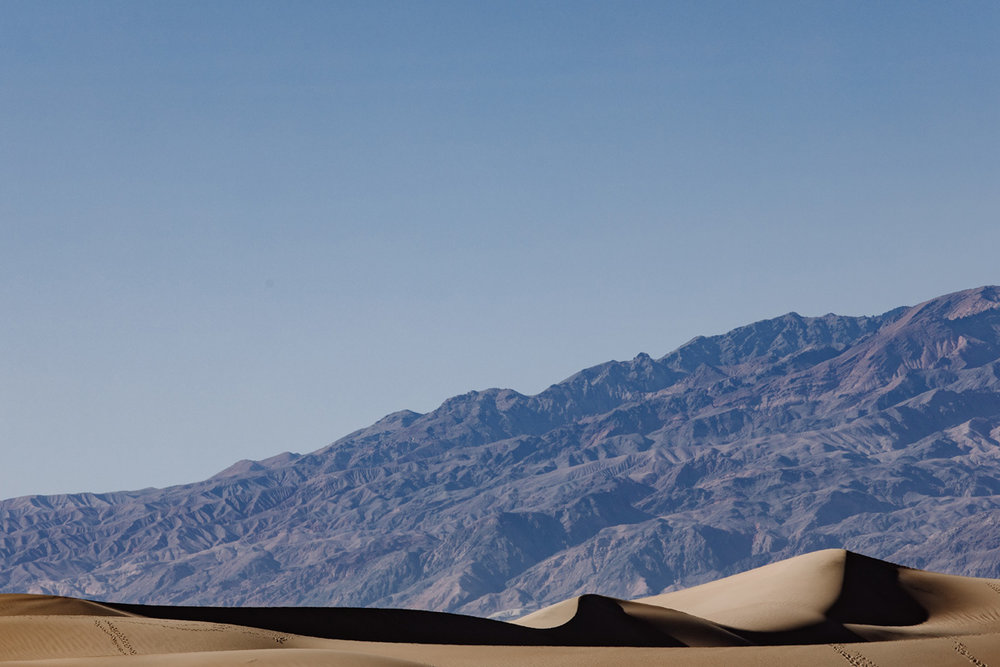
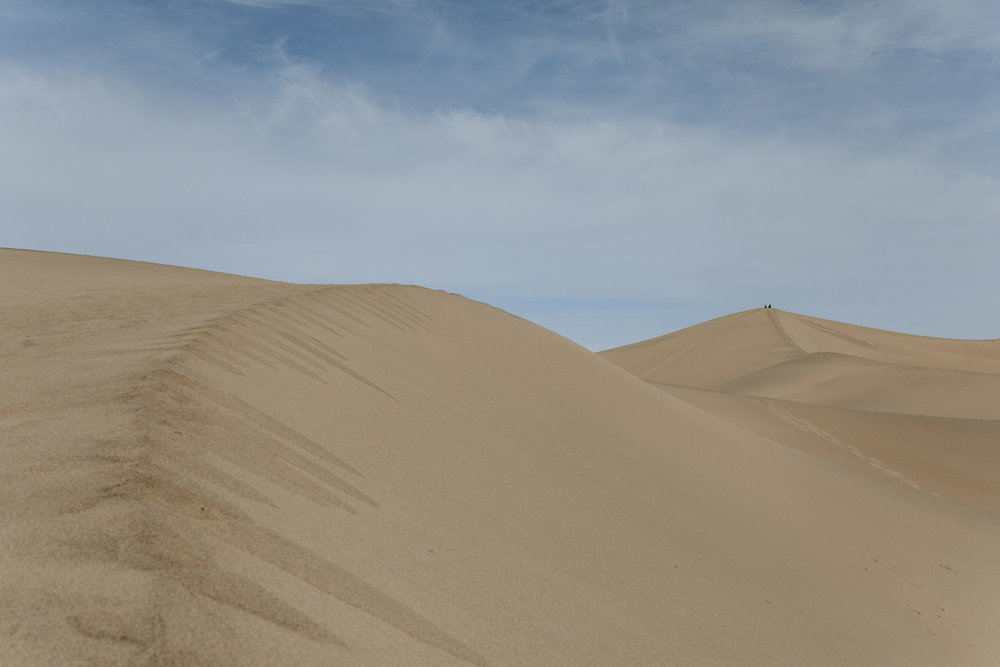
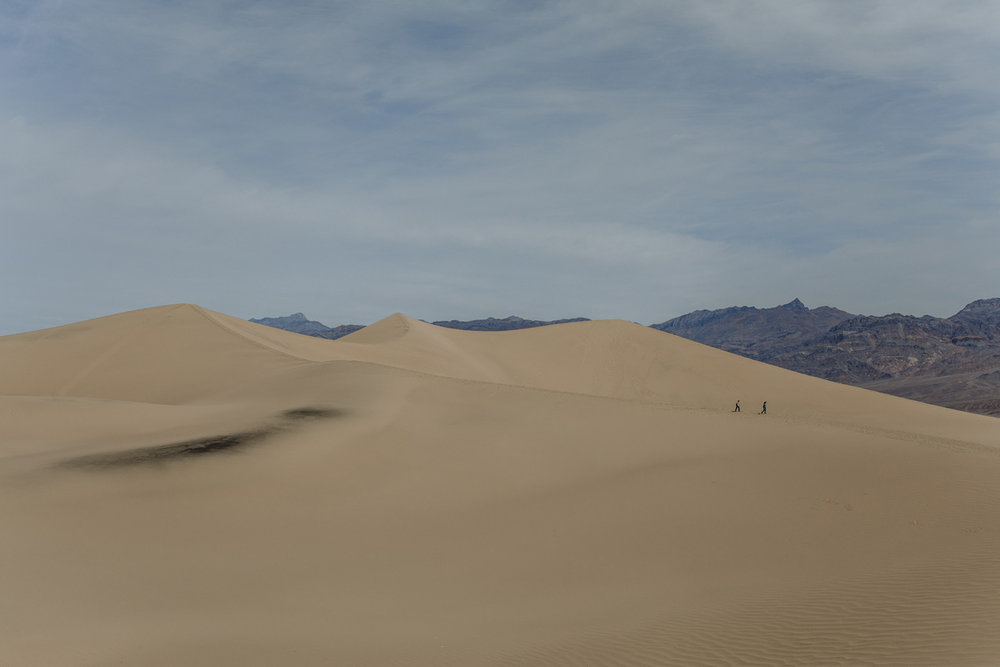
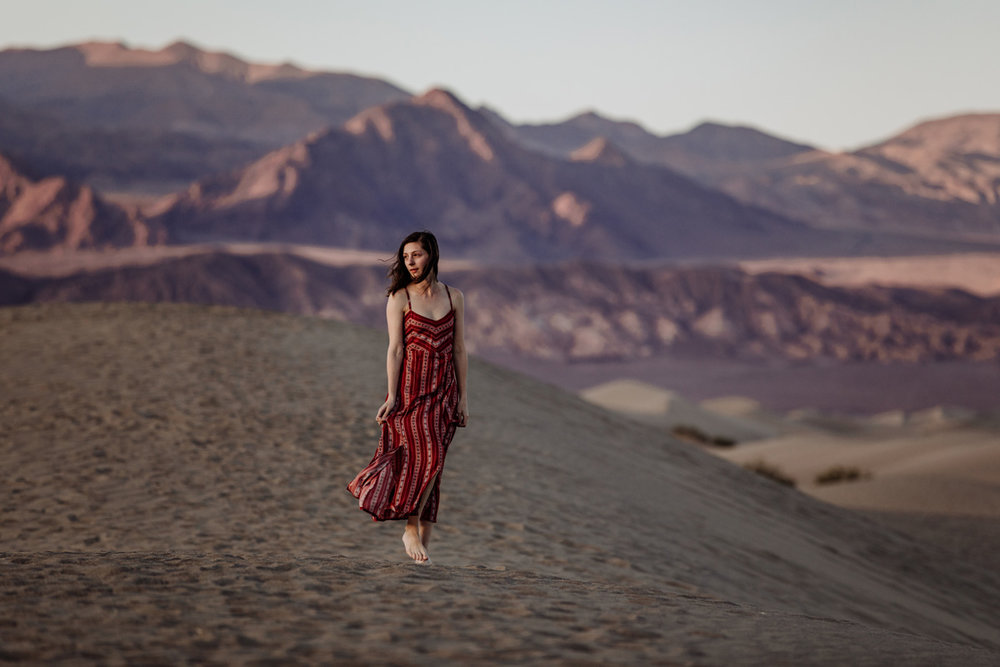
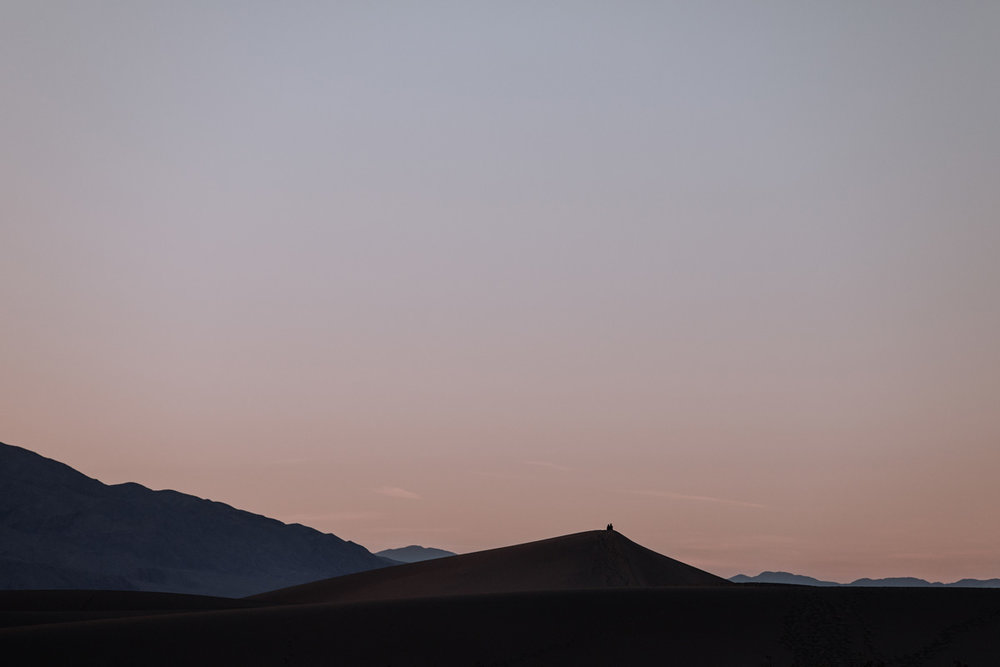
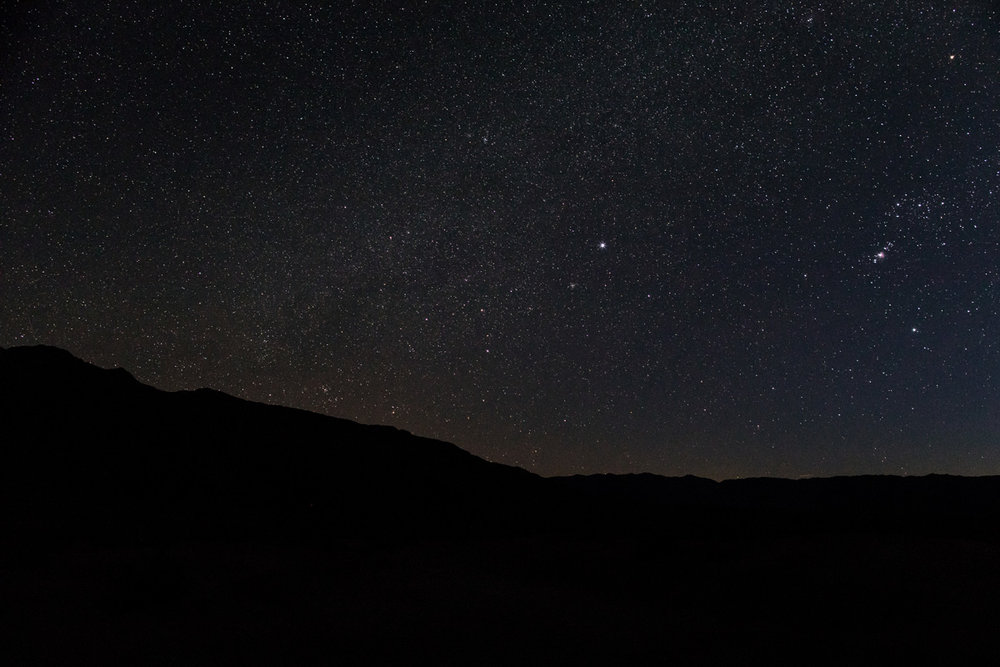
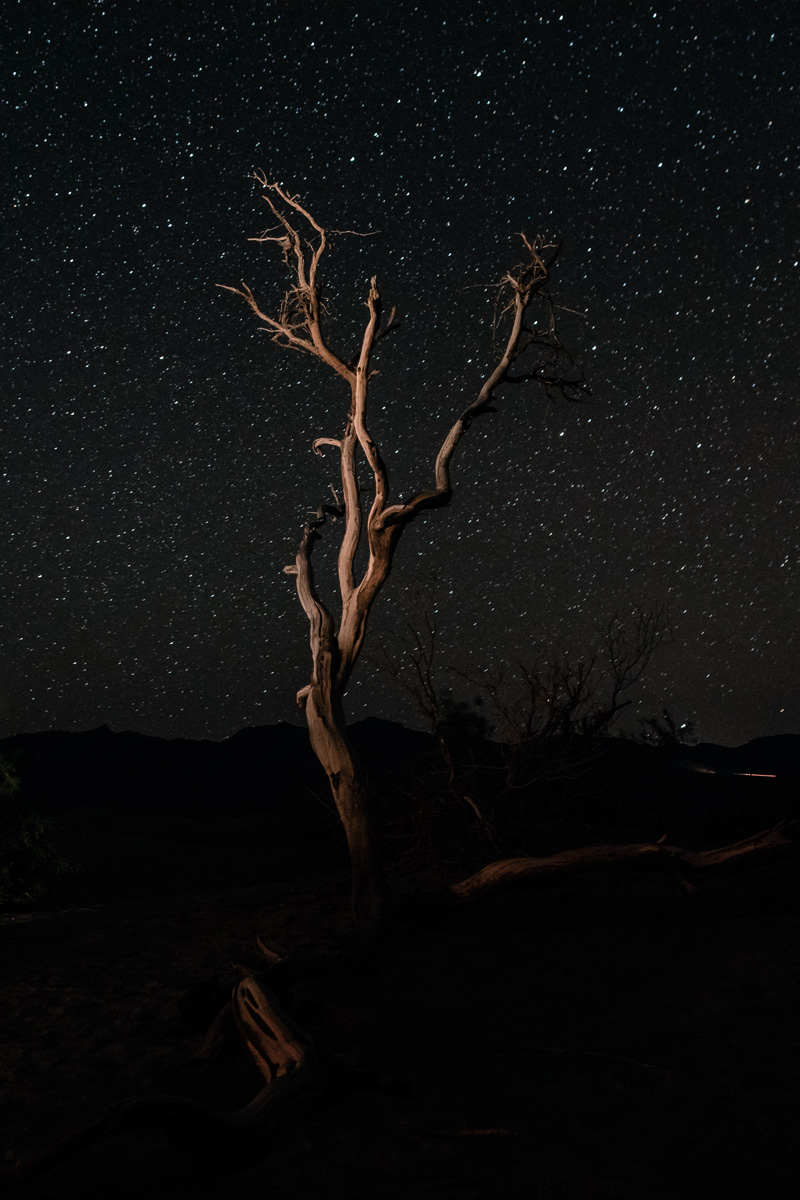
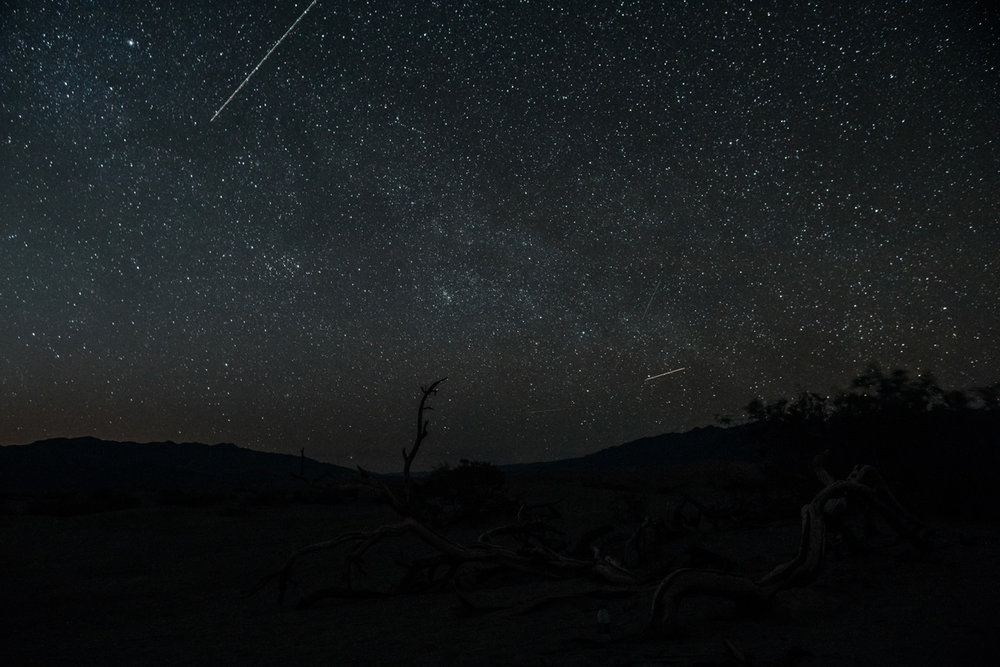
Day 2 in Death Valley
While the sand dunes were the big lure for us, there are a number of other cool little attractions to see while you drive around the park. In particular, Zabriskie Point and the Salt Flats provided pretty stellar views. We were a little disappointed to have missed out on the huge view from Dante’s Point, which was closed due to construction at the time we had visited – and is one of the more recognizable location shots from the original Star Wars (if that matters to you). Still, even without this view, what we saw was excellent in it’s own right – but man, that dry heat can really get to you, so load up on water to keep hydrated.
While there was much to see, there isn’t a whole lot to actually write about on our second day in Death Valley. We’ll let the pictures do the rest of the talking for us 🙂

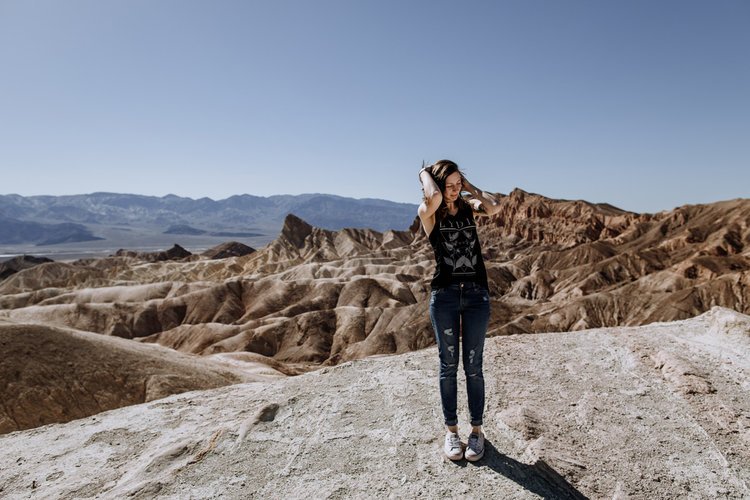

How to Prepare for a Trip to Death Valley
As with most things traveling related, the quality of your time is going to be directly impacted by how prepared you are going in. In an environment like Death Valley, this is especially true given how harsh the landscape is and can be – even on nice days. Below we highlight some main points to think about in your own preparations – and for sure if you need more information to be prepped beforehand, you can check out our Death Valley National Park packing list.
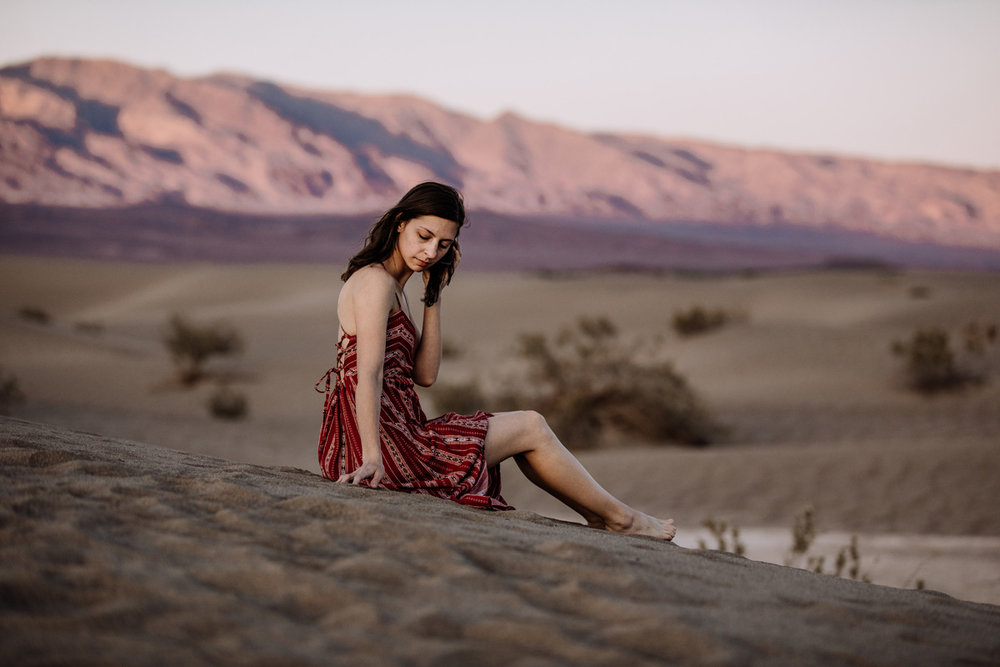
Stay Hydrated
It’s easy to image people becoming sick, passing out, or even dying from dehydration in this vast desert. We came prepared with a bunch of water bottles and Gatorade’s we picked up before leaving Las Vegas. At a few locations in the park, there are some general stores where you can also stock up on fluids. It’s best to have even more than you think you need, as we felt dehydration symptoms quicker than we would have imaged. Even in 80 degree weather – it is a different type of heat than we feel at home. Keep in mind too we are younger people, so if you are older – you will want to take extra precautions in this area.
Limited Cell Phone Service
It was nice to finally be able to get away from our cell phones just because our networks were unavailable. Of course, on the flip side of this, if you’d run into an emergency situation – getting help won’t exactly be easy since dialing 911 isn’t an option. You will lose service pretty frequently here, so be prepared.
Print Out Directions
Because of limited cell service, if you are like us and use GPS maps for directions on your phone – you will want to think again and come prepared with printed directions. You can also download maps to your phone beforehand so they are accessible even if your service drops.
Fortunately, Death Valley is an easy enough place to get around, with only a few real roads – so getting lost isn’t too easy.
Distance Between Civilization
When looking at photos of Death Valley, or even the map of the park, it may not seem all that big – but this can be deceiving as it is actually quite large. With 2 days, we just started to scratch the surface, and didn’t even make it deeper into the park.
With this huge space also comes a lot of distance between signs of civilization. Buying food, water, and gas are all very limited – so make sure you stock up when you are near one of these places. Of course, because of the limited supply and high demand, costs are significantly higher for gas and other items than you would find outside of the park – so we recommend picking things up before entering to help offset the amount you’ll be spending once your inside.
Desert Sun & Heat
The sun and heat in this desert can speak for themselves. It’s harsh, and probably unlike anything you’ve ever felt. Being the lowest point in North America, the sun seems to reflect off of the sand and push extra heat up into your face (along with a nice glare).
Mirages
Probably the trippiest part of being in Death Valley was seeing mirages for the first time in our lives. It is honestly one of the stranger natural phenomena we’ve experienced, as while we were driving on the road it would appear the road was gone even 10 feet in front of us (instead if would look like the rest of the desert), then the road would pop back into focus – and repeat this cycle over and over. Eventually we got used too it, but it does take a little adjusting to make sure you’re not going crazy.
Vehicle Preparations
Because of the high heat and dry environment, you will want to make sure the car you are using is ready to handle it. We’ve heard a lot of stories of people getting stuck in DV without air conditioning, or flat out breaking down.
While these things are not always avoidable, prepping in advance is a good idea.
If you are driving in your own car, make sure you’ve had a recent checkup and change your oil.
If you (like many of us) are visiting from out of town, the rental car you select will likely be well serviced before you leave the lot, so shouldn’t be too concerning as long as you go with a reputable dealer (we used Enterprise while visiting ourselves).
Heed the Warnings
We’ve made things pretty plain here on some of the big items to be aware of when visiting Death Valley, and these points are harped on by many bloggers online as well – so shouldn’t come as any big surprise once you set foot here. If you don’t want to take our word for it, heed the warning signs posted throughout the park – particularly at the tourist hotspots – which tell about the same type of considerations. Exploring DV is a great experience, but could end up being a really bad one if you don’t use common sense.
Leave the Animals Be
Death Valley is home to a lot of cool desert dwelling animals. It was particularly cool to see bearded dragons running around (since we have one at home). While most will not bother you, do keep an eye out for deadly ones such as rattlesnakes and coyotes. While you likely won’t have any issues, it’s good to know what is surrounding you in this space you are visiting – but they live in year round.
…They are indeed potentially dangerous to humans and pets. Coyotes increasingly are becoming bolder and more aggressive in their search for food and water, and I would not go out alone at night in such an area.
Arlosmom, Tripadvisor
Have a Plan
The last tip we can give is this: plan out your trip. This will help you to know what sites you are planning to see, and give a better sense of how long your drive times will be, and where/when you will want to stop for gas and refreshments. While some places in the world are great experienced without any planning, Death Valley is not really one of them due to the number of hazards present.
How to put this together? Simple – print out a map of Death Valley, mark the places you want to go, and search in Google Maps the distance from one place to the next. You can also pinpoint stores, restaurants, and gas stations for reference.
Should I Stay or Should I Go?
If the sound of being in the middle of a desert landscape sounds appealing to you, Death Valley is an excellent choice and quite accessible from many areas in the United States. The convenience of getting here from Las Vegas in particular – whether you choose to drive yourself or join a tour group – is what definitely helps it to maintain a solid amount of tourism.
Ultimately, our experience in Death Valley was great – but you should know that it is a place that operates at a slower pace due to the amount of driving from site to site and general bareness of the landscape outside of the main attractions. During the day, it can be very difficult to be outside due to the heat, and even a little boring as you are mostly met with a large array of brown colors. It is the evening and night time where Death Valley really shines, and for painterly sunsets and stargazing alone, you should visit this place.
So what do you think? Will you be planning to visit Death Valley, California yourself sometime? Or are you still on the fence? Feel free to let us know what you’re thinking in the comments below, and if you have any questions we’re happy to give some input based on our experiences, too!